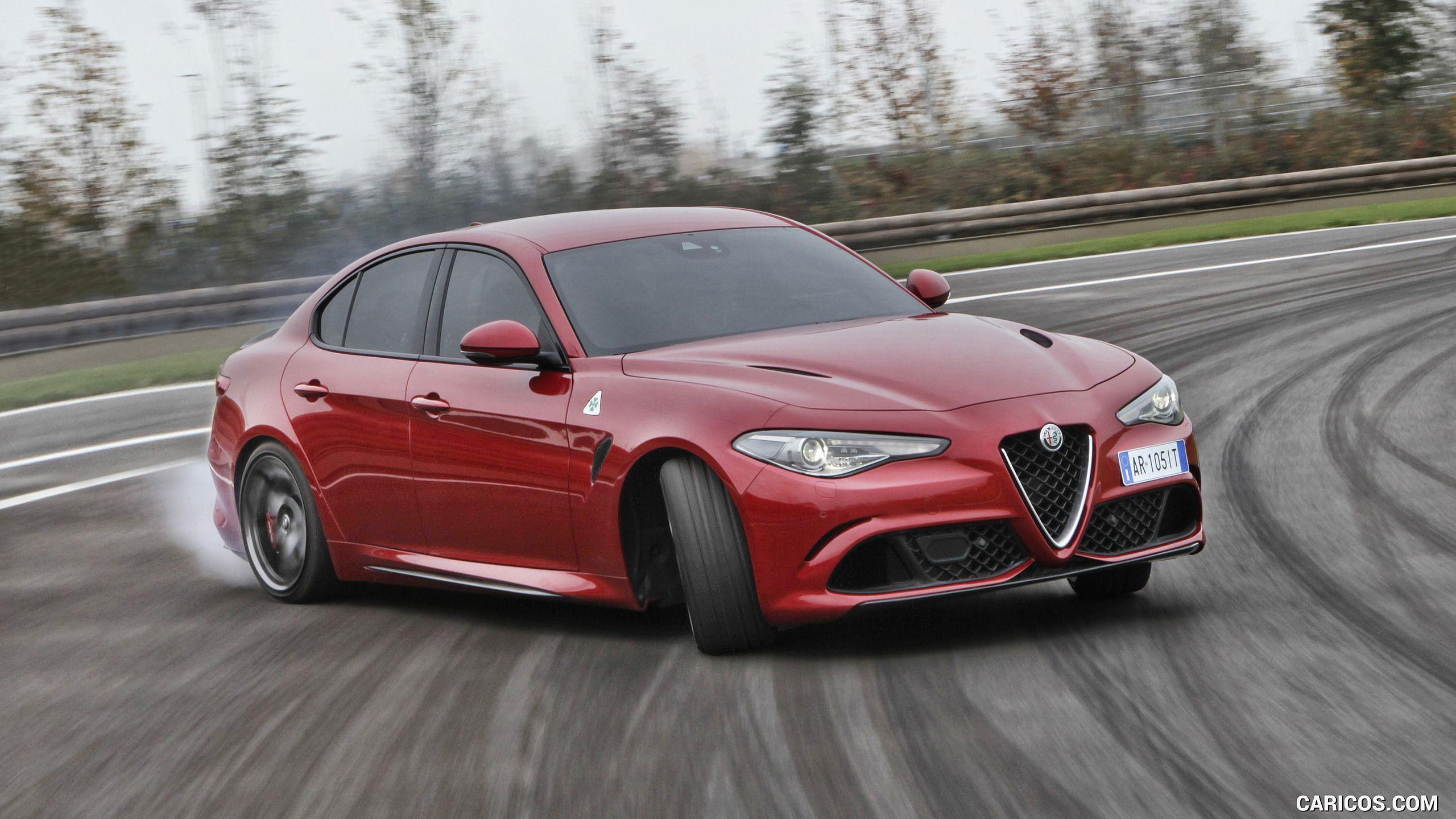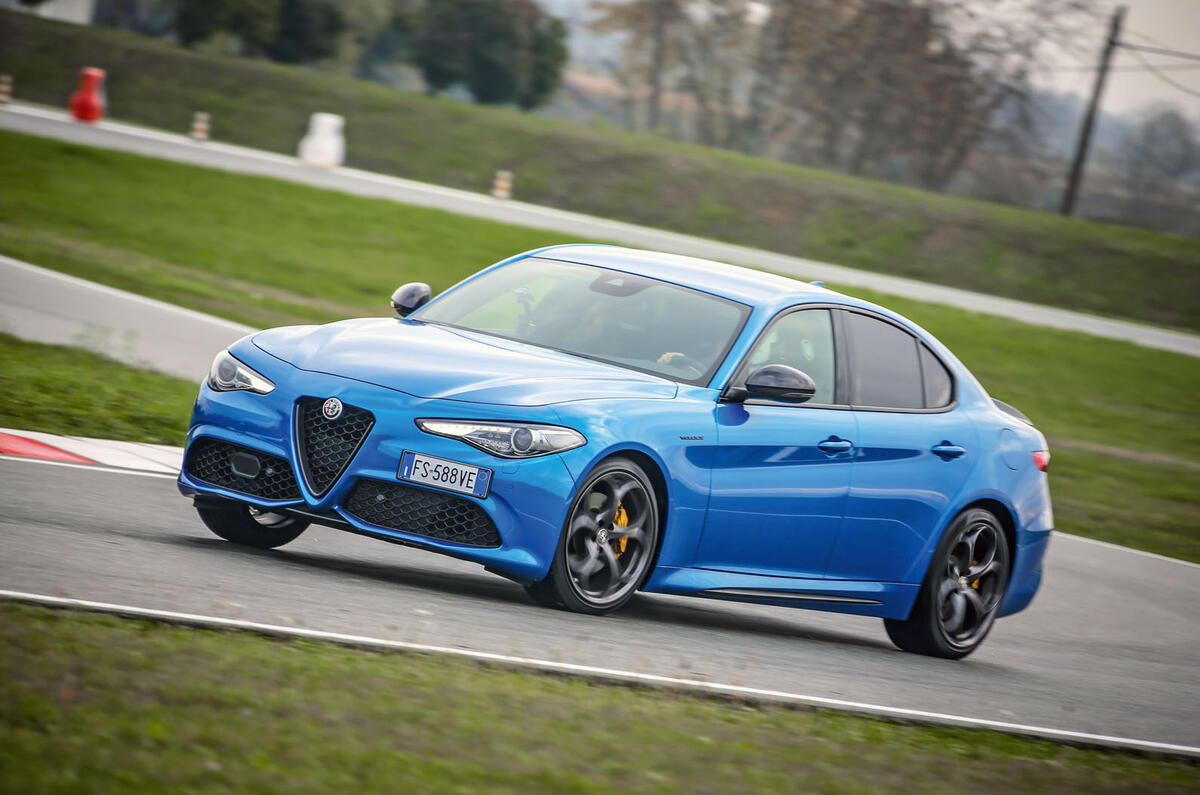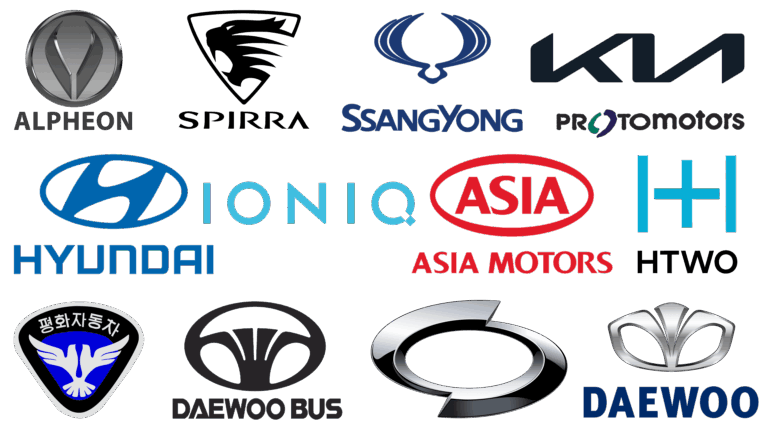Alfa Romeo Car Brands: A Journey Through Passion, Performance, and Italian Artistry
Alfa Romeo Car Brands: A Journey Through Passion, Performance, and Italian Artistry cars.truckstrend.com
Introduction: The Enduring Allure of Alfa Romeo
In the pantheon of automotive legends, few names evoke as much passion, history, and visceral driving pleasure as Alfa Romeo. More than just a car manufacturer, Alfa Romeo is a cultural icon, a symbol of Italian engineering prowess, artistic design, and an unyielding commitment to performance. From its humble beginnings in Milan in 1910, Alfa Romeo has carved out a unique niche, creating vehicles that are not merely modes of transport but extensions of the driver’s soul. It’s a brand built on a century of racing victories, groundbreaking innovations, and a design philosophy that consistently places beauty and emotion at its core. This article delves deep into the essence of Alfa Romeo, exploring its rich heritage, distinctive characteristics, and its journey through the annals of automotive history, offering a comprehensive guide to understanding what makes an Alfa Romeo truly special.
Alfa Romeo Car Brands: A Journey Through Passion, Performance, and Italian Artistry
History and Heritage: The Birth of a Legend
The story of Alfa Romeo begins on June 24, 1910, when A.L.F.A. (Anonima Lombarda Fabbrica Automobili – Lombard Automobile Factory, Public Company) was founded in Milan, Italy. The company’s initial focus was on producing high-performance road cars and grand prix racers. In 1915, Nicola Romeo, an industrialist, took control of the company, adding his surname to the brand, thus creating "Alfa Romeo."
From its earliest days, racing was in Alfa Romeo’s DNA. The brand quickly established a formidable reputation on the race track, winning the inaugural Automobile World Championship in 1925 and achieving numerous victories in iconic races like the Mille Miglia and Targa Florio. This racing pedigree, coupled with a commitment to engineering excellence, translated directly into their road cars, imbuing them with a distinct sporting character.
The post-war era saw Alfa Romeo transition from artisanal, low-volume production to a more industrialized model, though never sacrificing its core values. Iconic models like the Giulietta, Giulia, and Spider defined generations, becoming symbols of Italian style and accessible performance. Despite various ownership changes, including its long tenure under Fiat (now part of Stellantis), Alfa Romeo has consistently strived to maintain its unique identity, balancing tradition with innovation.
The Alfa Romeo Design Philosophy: Art in Motion
What truly sets Alfa Romeo apart is its unwavering commitment to design as an art form. Unlike many manufacturers who prioritize function above all else, Alfa Romeo treats its vehicles as sculptures, blending elegant lines, perfect proportions, and distinctive stylistic cues into a harmonious whole.
The "Scudetto" grille, a shield-shaped central element, is perhaps the most recognizable Alfa Romeo signature, a design feature that has evolved but remained constant for decades. Other hallmarks include the long bonnets, short overhangs, and sculpted flanks that give their cars a sense of dynamic readiness, even at a standstill. Legendary designers and coachbuilders like Pininfarina, Bertone, and Zagato have all contributed to Alfa Romeo’s stunning portfolio, creating timeless classics that continue to inspire.
This design philosophy isn’t merely superficial; it’s intrinsically linked to the driving experience. Every curve and line serves a purpose, contributing to aerodynamics, visual balance, and an emotional connection that resonates deeply with owners. It’s about creating a vehicle that stirs the soul long before the engine even turns over.

Performance and Engineering: The Heart of a Beast
Beneath the beautiful skin of an Alfa Romeo lies a meticulously engineered machine built for exhilaration. The brand’s reputation for performance is rooted in its innovative engine technology, precise handling, and a driving feel that is uniquely engaging.
Historically, Alfa Romeo engines were renowned for their rev-happy nature, sonorous exhaust notes, and advanced features. The "Busso" V6, for example, is legendary for its beautiful design and distinctive sound. In the modern era, engines like the Ferrari-derived 2.9-liter twin-turbo V6 found in the Quadrifoglio models continue this legacy, delivering breathtaking power and a thrilling soundtrack.
Alfa Romeo vehicles are engineered for agility and responsiveness. Features such as near 50/50 weight distribution, advanced suspension systems (like Alfa Link), and direct steering contribute to an exceptionally communicative and enjoyable driving experience. The DNA (Dynamic, Natural, Advanced Efficiency) drive mode selector, a staple in modern Alfas, allows drivers to tailor the car’s characteristics to their preference, from relaxed cruising to aggressive sport driving.
The Quadrifoglio (four-leaf clover) badge signifies the pinnacle of Alfa Romeo performance, reserved for their most powerful and track-focused variants. These models embody the brand’s racing spirit, offering class-leading performance figures and a driving dynamic that rivals the best in the world.

Key Models and Their Impact
Alfa Romeo’s product portfolio spans a century of iconic vehicles, each contributing to the brand’s rich tapestry.
- Classic Icons:
- Giulietta (1950s): Introduced the concept of the compact sports sedan and coupe, making performance more accessible.
- Giulia (original, 1960s): A true benchmark for sports sedans, known for its handling and advanced engines.
- Spider (Duetto, 1960s-1990s): The quintessential Italian roadster, immortalized in film and beloved for its timeless design.
- 33 Stradale (1967): One of the most beautiful and rare supercars ever made, a testament to Alfa Romeo’s engineering artistry.

- Modern Lineup:
- Giulia (current generation): Reintroduced in 2016, this sports sedan revitalized the brand with its stunning design, engaging dynamics, and powerful engine options, especially the Quadrifoglio variant which competes directly with German performance sedans.
- Stelvio: Alfa Romeo’s first SUV, the Stelvio brought the brand’s performance and design ethos to a growing segment. It stands out for its sporty handling, making it one of the most driver-focused SUVs on the market.
- Tonale: The brand’s entry into the compact SUV segment, the Tonale marks a significant step towards electrification, offering hybrid and plug-in hybrid powertrains while retaining Alfa Romeo’s signature style and driving engagement.
The current lineup showcases Alfa Romeo’s commitment to adapting to market demands while staying true to its core values of sportiness, elegance, and Italian flair.
Ownership Experience: Passion and Practicality
Owning an Alfa Romeo is often described as an emotional journey. The brand cultivates a deep sense of loyalty and community among its enthusiasts, known as "Alfisti." This passion stems from the unique driving experience, the car’s undeniable aesthetic appeal, and the sense of being part of a storied legacy.
Practical Advice for Prospective Buyers:
- New vs. Used: New Alfas benefit from modern engineering, improved reliability, and comprehensive warranties. Used models can offer excellent value, especially for those seeking older, characterful cars, but thorough pre-purchase inspections are crucial.
- Maintenance: While historical perceptions of unreliability have largely been addressed by modern manufacturing techniques and quality control, regular scheduled maintenance is vital for any performance vehicle. Be prepared for potentially higher service costs compared to mass-market brands, especially for Quadrifoglio models. Finding a reputable service center familiar with Alfa Romeo is key.
- Resale Value: While not always matching German rivals, modern Alfa Romeo models, especially the Quadrifoglio variants, tend to hold their value reasonably well due to their exclusivity and performance.
- Community: Join Alfa Romeo clubs and online forums. The community is vibrant and supportive, offering a wealth of knowledge, advice, and camaraderie.
Challenges and Solutions for Alfa Romeo
Despite its undeniable appeal, Alfa Romeo has faced its share of challenges. Historically, perceptions of reliability issues and inconsistent quality control sometimes overshadowed its strengths. In recent decades, the brand has struggled with lower sales volumes and market share compared to luxury rivals like BMW, Mercedes-Benz, and Audi.
Solutions and Future Outlook:
- Focus on Quality: Under Stellantis, Alfa Romeo has significantly invested in improving manufacturing quality and reliability, directly addressing past concerns.
- Strategic Model Expansion: The introduction of the Stelvio SUV and the Tonale (including its PHEV variant) reflects a strategic move into popular segments, aiming to increase sales volume and broaden appeal while embracing electrification.
- Electrification: Alfa Romeo has committed to becoming an all-electric brand by 2027 in Europe, a bold move that will redefine its performance and sustainability credentials. This transition is crucial for future competitiveness.
- Brand Positioning: Alfa Romeo is doubling down on its unique identity—a blend of Italian style, engaging performance, and emotional appeal—to differentiate itself in a crowded luxury market.
The road ahead for Alfa Romeo involves navigating the complexities of electrification and market shifts while preserving the very essence that makes it unique. The brand’s future hinges on its ability to innovate without losing its soul.
Concluding Summary: The Enduring Spirit of Alfa Romeo
Alfa Romeo is more than just a car; it’s an experience, a statement, and a piece of automotive art. Its legacy is built on a century of racing glory, iconic design, and an unwavering commitment to delivering exhilarating driving dynamics. From the passion instilled in every curve to the thrill generated by every engine note, an Alfa Romeo evokes an emotional connection that few other brands can match.
While the brand has navigated its share of challenges, its resurgence with compelling models like the Giulia and Stelvio, coupled with a clear path towards an electrified future, signals a promising new chapter. Alfa Romeo remains a beacon of Italian automotive excellence, a brand that dares to be different, and one that will undoubtedly continue to stir the hearts of enthusiasts worldwide for generations to come. To drive an Alfa Romeo is to embrace a legacy, to feel the pulse of passion, and to truly experience the art of motion.
Alfa Romeo Car Brands: Illustrative Price Table (Approximate MSRP for U.S. Market)
Please note: Prices are approximate MSRP for base models in the U.S. market and can vary significantly based on trim level, optional features, region, taxes, and current promotions. Always consult an official Alfa Romeo dealership for the most accurate and up-to-date pricing.
| Model | Trim Level | Starting MSRP (Approx. USD) | Key Features / Engine |
|---|---|---|---|
| Giulia | Sprint | $45,000 | 2.0L Turbo I4, RWD/AWD, Leather seats, 8.8" touchscreen |
| Ti | $47,500 | Sprint + Premium features, larger wheels, upgraded interior trim | |
| Veloce | $52,000 | Ti + Sport seats, limited-slip differential, sport suspension, more aggressive styling | |
| Quadrifoglio | $81,000 | 2.9L Twin-Turbo V6 (505 hp), Carbon Fiber driveshaft, High-performance brakes, unique styling | |
| Stelvio | Sprint | $47,000 | 2.0L Turbo I4, AWD, Power liftgate, 8.8" touchscreen |
| Ti | $50,000 | Sprint + Premium features, larger wheels, upgraded interior | |
| Veloce | $54,500 | Ti + Sport seats, limited-slip differential, sport suspension, unique styling | |
| Quadrifoglio | $87,000 | 2.9L Twin-Turbo V6 (505 hp), High-performance brakes, Carbon Fiber trim, unique styling | |
| Tonale | Sprint (Hybrid) | $43,000 | 1.3L Turbo PHEV or 2.0L Turbo I4, AWD, 12.3" digital cluster, 10.25" touchscreen |
| Ti (Hybrid) | $45,000 | Sprint + Enhanced interior, larger wheels, more driver assistance features | |
| Veloce (Hybrid) | $48,000 | Ti + Sport seats, active suspension, unique sporty design elements |
Frequently Asked Questions (FAQ) about Alfa Romeo Car Brands
1. Is Alfa Romeo a luxury car brand?
Yes, Alfa Romeo is positioned as a premium/luxury brand. While it emphasizes performance and driver engagement more than some traditional luxury brands, its pricing, design, materials, and technological features place it squarely in the luxury segment, competing with brands like BMW, Audi, and Mercedes-Benz.
2. Are Alfa Romeo cars reliable?
Modern Alfa Romeo cars have significantly improved their reliability compared to older models. While past perceptions lingered, recent models like the Giulia and Stelvio have shown much better quality control and build consistency. They are still performance vehicles that require diligent maintenance, but they are generally considered on par with other European luxury brands in terms of modern reliability.
3. Where are Alfa Romeo cars manufactured?
Most current Alfa Romeo models, including the Giulia, Stelvio, and Tonale, are manufactured in Italy. The Giulia and Stelvio are produced at the Cassino Plant in Piedimonte San Germano, Italy. The Tonale is produced at the Pomigliano d’Arco plant, near Naples, Italy.
4. What does "Quadrifoglio" mean, and what is its significance?
"Quadrifoglio" is Italian for "four-leaf clover." It is Alfa Romeo’s most revered badge, symbolizing good luck and high performance. The emblem was first used in 1923 by Ugo Sivocci on his Alfa Romeo RL for the Targa Florio race, which he won. Since then, it has been reserved for Alfa Romeo’s highest-performance, track-focused models, signifying the pinnacle of the brand’s engineering and driving dynamics.
5. Are Alfa Romeo cars expensive to maintain?
Maintenance costs for Alfa Romeo vehicles can be higher than for non-luxury, mass-market brands. This is typical for performance-oriented luxury cars due to specialized parts, advanced technology, and the need for skilled technicians. However, they are generally comparable to the maintenance costs of other European luxury competitors. Regular servicing is crucial to ensure longevity and optimal performance.
6. What is the future of Alfa Romeo?
Alfa Romeo is undergoing a significant transformation, driven by its parent company, Stellantis. The brand is committed to a full electrification strategy, aiming to become an all-electric brand in Europe by 2027. This includes introducing new electric models and hybrid options like the Tonale PHEV. The future will see Alfa Romeo blend its traditional passion and performance with sustainable and advanced electric powertrains.
7. Why should I choose an Alfa Romeo over a German competitor?
Choosing an Alfa Romeo often comes down to an emotional connection and a desire for a distinct driving experience. Alfas are renowned for their captivating design, engaging steering, exceptional handling, and characterful engines. They offer a unique blend of passion, sportiness, and Italian flair that can feel more visceral and less clinical than some German rivals. For those who prioritize driving enjoyment and distinctive style, an Alfa Romeo offers a compelling alternative.




